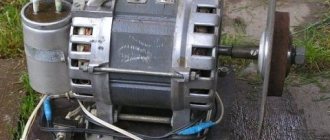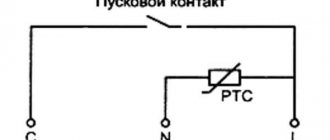Household appliances / Washing machines / How to choose a washing machine
For a long time now, the presence of an automatic washing machine in the house has become common and natural. It is almost impossible to imagine how people could manage without it before? Using the machine is easy and simple. You don't need to be incredibly talented to run the automatic wash program you want. Even for people who are not very “friendly” with technology, operating a modern machine does not cause any particular problems.
But the apparent ease of use does not negate the fact that this type of household appliance is a rather complex device, composed not only of mechanical parts, but also of various electronic modules and sensors. Few users have any idea what the operating principle of an automatic washing machine is. And even more so, what kind of algorithm forces the machine to execute this or that program. To better understand how to operate it correctly and what can be done if problems occur, you should at least to a small extent understand how an automatic washing machine works and by what laws it operates.
Design of automatic drum-type machines
So, the basis of such machines is a cylinder-shaped drum, which is placed in a tank suspended inside the machine body on springs. The position of the tank/drum unit is controlled by a system of shock absorbers and counterweights. Water is drawn directly into this very tank through a solenoid valve. Its quantity is controlled by a special device called a water level sensor or pressure switch.
The rotation of the drum is ensured by a drive motor and a bearing system. The drive can be belt or “direct” (the motor is directly connected to the shaft of the drum cross). A heating element is placed in the water tank, whose task is to heat the water. To control the water temperature, the heating element is supplemented with a temperature sensor, which is located in the tank body or directly in the heating element itself.
Water is drained from the tank using a special drainage pump. Automation of the process is achieved using an electronic control module, which is the “brain” for the washing machine. The entire operating algorithm completely depends on this element.
How does a machine wash automatically?
The principle of washing remains the same - it is a mechanical interaction with the laundry. Only, unlike activator-type machines, this effect is carried out by the perforated walls of the drum.
The implementation of the selected program is ensured by the degree of water heating, its quantity, washing time and detergent for automatic washing machines (no matter liquid or powder). And for a more intense or, conversely, delicate mechanical action on the laundry, a special algorithm of drum movements is responsible. It can rotate in opposite directions with the same or different frequencies (depending on the program). Or not even make a full rotation, but rather rock the laundry for the most delicate washing.
From different manufacturers, the walls of the drum can be standard (smooth with a system of holes), or they can be of a special shape and are designed to provide a better washing result (for example, a honeycomb drum). Of course, each manufacturer claims that its drum is the best, and its movement algorithm is the most effective.
Pre-launch stage
To ensure automatic operation, the machine is permanently connected to the water supply and plugged into an electrical outlet. The required amount of detergent for automatic machines must be added to the powder dispenser or directly inside the drum. The drain can also be stationary or done into a sink or bathtub using an adapter hook on the drain hose.
Through the loading hatch, laundry made of a certain type of fabric and a certain color is placed into the washing machine. The program corresponding to this type of laundry is set on the control panel. If necessary, spin speed and temperature conditions are adjusted. Additional washing or rinsing parameters are set (if they are provided for a specific machine model).
Principle of operation
The description of the structure of a drum-type washing machine and the procedure for performing operations to obtain clean laundry make it possible to formulate the principles of its operation:
- The process consists of the mechanical action of the drum on the laundry. Elements such as ribs, together with a perforated surface, when rotated, create manipulations similar to washing by hand.
- Possibility to wash clothes from almost any material. The control unit allows you to select a program for the most delicate fabric (delicate wash, hand wash, etc.).
- A wide range of temperatures used (30°C—95°C) in combination with proprietary powder makes it possible to obtain high-quality laundry.
- The drum volume allows you to load a fairly large number of dirty items at a time, increasing productivity.
Video
How does automatic washing work?
The process is started by pressing the “Start”, “Start” button or something else designated. The water begins to flow through the fill valve while the drum rotates to more evenly wet the laundry. Some modifications of washing machines additionally have a device that supplies water from above the hatch to optimize this process.
As the tank fills with water, the pressure in it begins to change. Based on this parameter, a special sensor (pressostat), when the water level required for a specific amount of laundry is reached, sends a signal to the control unit about the need to stop its supply. The control module, in turn, closes the solenoid fill valve. During the pouring process, powder is washed out of the detergent dispenser and dissolved with water in the drum. If fabric softener is used, the moment it is taken out is determined by the installed program.
Under the control of the control module, at a certain moment, the soap solution is rinsed out several times. The most advanced automatic machines are often equipped with a water transparency sensor. Then rinsing will be carried out until the remaining powder and contaminants in the water are completely washed away. Everything ends with draining (the drain pump is turned on) and spinning by turning on the engine at a given speed (if the program without spinning is not installed).
Tank and drum
The tank is considered the main and most voluminous element of an automatic machine. It can hold 35-60 liters of water. To prevent the machine from vibrating excessively during washing, the tank is not rigidly connected to the body. To support it, there are two or four springs at the top of the machine, and two or four shock absorbers at the bottom. In addition, to eliminate imbalance and strong vibration of the tank during washing, concrete counterweights are attached to it. Thanks to this design, the body remains motionless during operation of the equipment, despite the vibrations of the tank.
Inside the tank there is a drum connected by a belt drive or direct drive to the engine. Laundry is loaded into the drum, and after the washing program is turned on, water and detergent begin to flow into it through many holes. At the front, the tank is connected to the drum by a rubber cuff, which ensures tightness, and at the rear, the drum shaft passes through the tank to the bearing unit.
Stainless steel is usually used to make the drum, and the tank can be either steel or plastic. The second option is cheaper, but is more fragile and has a shorter service life. Often the tank has two halves, which are connected with bolts or with a clamp, but in many machines there are non-separable tanks.
Automatic washing machine programs
Absolutely all washing machines have three main programs – cotton, synthetics and wool. Everything else is their varieties or additions to them, which help to change or supplement them to enhance the effect or reduce washing time. Programs for synthetics and especially wool are considered delicate types of washing. The reel rotation algorithm for these programs usually changes.
- Cotton. The most intensive washing with the ability to adjust the spin speed and temperature. Usually there is an option for accelerated washing by reducing rinses. Divided into a program for light or dark laundry.
- Synthetics. A more gentle program with shorter washing times and limited spin speed.
- Wool. The most delicate wash. As a rule, washing occurs at low temperatures and with minimal or no spin. If the “stop with water” function is activated, after finishing washing the wool, you need to separately set the drain with spin or only drain.
Most modern automatic machines have a “Short wash” subprogram (15, 12 minutes, etc.). It is difficult to consider this type of program a full-fledged wash and expect that in such a short time, its result will be comparable to longer programs. Rather, it is a convenient way to refresh not particularly soiled laundry.
What is automatic transmission?
An automatic gearbox is an important structural element of a vehicle transmission, which serves to change the torque, direction, and speed of the vehicle. and for long-term separation of the engine from the transmission. There are continuously variable (CVT), stepped (Hydroautomatic) and combined gearboxes (Robotic gearboxes of the “DSG” type).
USEFUL INFORMATION Types and types of automatic transmissions
It's no secret that the transmission has a major influence on the dynamics of the car. Manufacturers are constantly testing and introducing the latest technologies into our cars. Nevertheless, most motorists prefer to drive cars with a manual transmission, as they believe that the latter brings much less headaches. This is partly true, but knowing the design features of the automatic transmission and the principle of its operation, you initially extend the life of your gearbox. In this article we would like to tell you about the basic mechanisms and operating principles of an automatic transmission.
What is better manual transmission or automatic transmission
As a rule, our domestic car enthusiasts treat automatic transmissions with certain prejudices. Apparently the reason for this is our chronic reluctance to shift our problem onto someone else’s shoulders and our attempt to eliminate it on our own. For example, the Americans, who invented the automatic transmission, do not suffer from this. In America, manual gearboxes are very unpopular and only 5% of every hundred American motorists use manual transmissions. The popularity of automatic transmissions in Europe is growing from year to year at a tremendous pace. Of course, there are fans of the machine gun among our compatriots, but not everyone can use them correctly. According to auto mechanics, it was the untimely maintenance. Maintenance and improper operation are often the root cause of all automatic transmission malfunctions.
- How to determine whether an automatic transmission is faulty?
Additional elements of automatic washing machines that you should know about
- Fill filter. This is a small removable mesh that is installed at the point where the inlet hose connects to the machine. As it becomes dirty, this filter can be easily removed with pliers and cleaned of contaminants caused by poor quality tap water.
- Drain filter. During draining, this filter protects the pump from foreign objects entering it that could block the operation of the pump. In cases where the machine refuses to drain water, the first thing to do is clean this very filter. It is always located on the front of the machine body at the bottom. To remove it you just need to unscrew it.
This somewhat simple, but in some ways complex device serves faithfully in our homes. With knowledge of the principle by which an automatic washing machine works and how it is designed, it is quite easy (if any problems are detected) to figure out - what, exactly, is the problem? This means that fixing the problem is much easier.
—
Types of automatic transmission | Comparison with mechanics | Advantages and disadvantages
The constant improvement in the quality of operation of a modern vehicle has inevitably led to noticeable structural complexity. Equipping the car with an automatic transmission had a favorable effect on the engine, speed characteristics and chassis, which also made it possible to partially lighten the driver’s load while driving. Due to its ease of operation and reliability, the use of this invention has found wide application.
Nowadays, automatic transmissions are widely used in both passenger cars, all-wheel drive cars, and trucks. In order to move at the required speed, the driver of a car with a manual gearbox needs to “pull” the gearshift lever quite often, and he must independently monitor the speed and load. Using an automatic transmission eliminates these needs.
There are obvious advantages of an automatic machine over a manual one, such as:
- Driving comfort increases;
- Automatic gear shifts occur smoothly;
- The chassis and engine protect against overloads;
- Both automatic and manual gear shifting are possible.
Automatic transmissions used today are conventionally divided into two types. These types differ mainly in the systems for monitoring and controlling the use of the transmission.
- In the first type of automatic transmission, control and monitoring is performed by a specific hydraulic device.
- The same function in an automatic transmission of the second type is performed by an electronic device. Robotic boxes.
Here are some very specific examples:
Suppose a car is moving along a flat section of the road, a section with a steep slope. For some time we do not touch the accelerator pedal and observe the reaction of the torque converter as driving conditions change. As the load on the drive wheels increases, the car loses speed. As a result, the turbine rotation speed drops. This affects the resistance to the movement of working fluids inside the torque converter. As the circulation speed increases, it automatically increases the torque on the turbine wheel shaft until an equilibrium arises between it and the moment of resistance to movement.
This is exactly how the automatic machine works when moving away. Only now is the time to use the accelerator - after this, the crankshaft speed increases and so does the pump wheel, and the car and turbine were stationary, but slipping inside the torque converter did not prevent the engine from idling. In this case, the torque is transformed as many times as possible. But once the required speed is achieved, torque conversion becomes unnecessary. With the help of an automatically operating lock, the torque converter turns into a link that rigidly connects the driven and drive shafts. With such blocking, internal losses are eliminated, the transmission efficiency value increases, in this driving mode, fuel consumption decreases and the efficiency of engine braking during deceleration increases.
The reactor is released and rotated with turbine and pump wheels to reduce all the same losses.
For what purpose is a gearbox attached to a torque converter when it can independently change the amount of torque depending on the load on the drive wheels?
The torque converter is capable of changing torque with a coefficient of 2-3.5 no more. And for efficient operation of the transmission, such ranges of changes in subordinate numbers are clearly not enough. Also, sometimes it becomes necessary to engage reverse gear or neutral. Automatic transmissions, having gears, still differ in many ways from manual transmissions; for example, they change gears without interrupting the power flow using multi-disc friction clutches driven by hydraulics and band brakes. Depending on the speed of the car and the intensity of pressing the accelerator pedal, the desired gear is automatically selected, and it determines the intensity of acceleration.
The electronic and hydraulic control units of the automatic transmission determine the desired gear. The driver, in addition to pressing the gas pedal, can select sport or winter modes (such automatic transmission modes have an individual gear shift algorithm), and can also select a mode that helps to move along sections of the road with difficult terrain (in this mode, the automatic transmission will not be able to shift above a certain gear) .
In addition to the planetary gear and torque converter, the automatic transmission also includes a pump that supplies the hydraulic unit with the torque converter with working fluid and lubricates the box, and the automatic transmission cooling radiator, which is part of the automatic transmission, cools the working fluid, which tends to overheat.
Differences in the automatic transmission design of rear-wheel drive and front-wheel drive cars
There are also several differences in the design and layout of automatic transmissions between rear-wheel drive and front-wheel drive vehicles. In front-wheel drive cars, the automatic transmission is more compact and inside the housing it has a main gear compartment, i.e., a differential. Otherwise, the functions and operating principles of all automatic transmissions are the same. To ensure movement and perform all functions, the automatic transmission is equipped with such components as: a torque converter, a control and monitoring unit, a gearbox and a driving mode selection mechanism.
Rear wheel drive car Front wheel drive car











